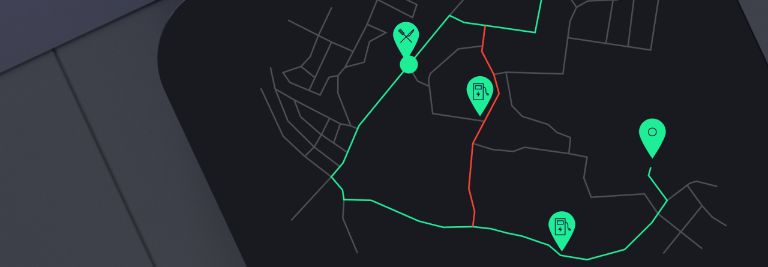E-mobility and navigation: the data behind route calculation
Navigation systems rely on various sources to calculate the best route. What kind of data is taken into account for the calculation? And what elements actually define the optimal route?
Planning and data sources
Electric mobility broadens the landscape, in terms of requirements, for navigation functions and in particular for route planning: for those driving an electric vehicle, it is more convenient if charging stops are automatically integrated into the route.
What is the basis for optimal route calculation? It is the intelligent combination of vehicle-specific references and data from online sources.
The system also takes into account vehicle consumption in relation to previous journeys and the driver's driving behaviour, route specifications or outside temperature. The information is then cross-referenced with real-time data on traffic or the availability of charging points, e.g. the reporting of a malfunction at a charging station included in the route or a traffic jam leading to a change in the route.
The decisive elements
Fastest, shortest or most efficient: what defines the ‘best’ route? For e-drivers, it is the combination of optimal driving and charging time.
Matthias Manns, CARIAD Product Manager for Navigation, explains: ‘We at CARIAD call it “globally optimised route”. It is the fastest of all possible routes to a destination, taking into account charging stops along the way, when the destination is further away than the car's range.
A practical example: route A has more kilometres than route B, but there is a fast charging station along route A, which reduces the charging time needed compared to route B. Even though route A has more kilometres, it is the shortest route in terms of overall travel time. Similarly, a route with two short stops with ultra fast charging might get you to your destination faster than a route with a single, but long, charging stop.
Intelligent assistant for e-drivers
Personal preferences also play a role in route calculation. For example, drivers can indicate how much range (State of Charge, SoC) they intend to reach their destination with. In this case, charging stops are adjusted accordingly, as it may not be necessary to recharge the vehicle 100 per cent at every refuelling. E-drivers also have the possibility to filter charging points according to charging capacity or payment methods.
This ‘hybrid’ navigation solution allows drivers of electric cars to reliably and accurately plan their route within seconds. Thanks to route calculation based on online data and the integrated e-route planner, optimal charging stops are automatically added to the route. The new navigation function, jointly developed by the Audi and CARIAD teams, makes its debut on the Audi Q6 e-tron.
